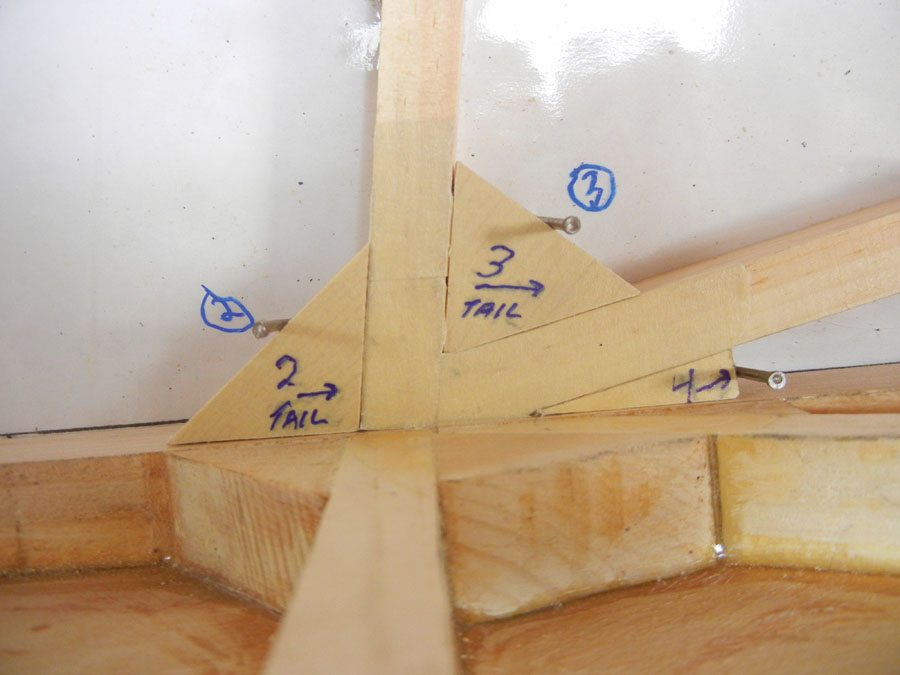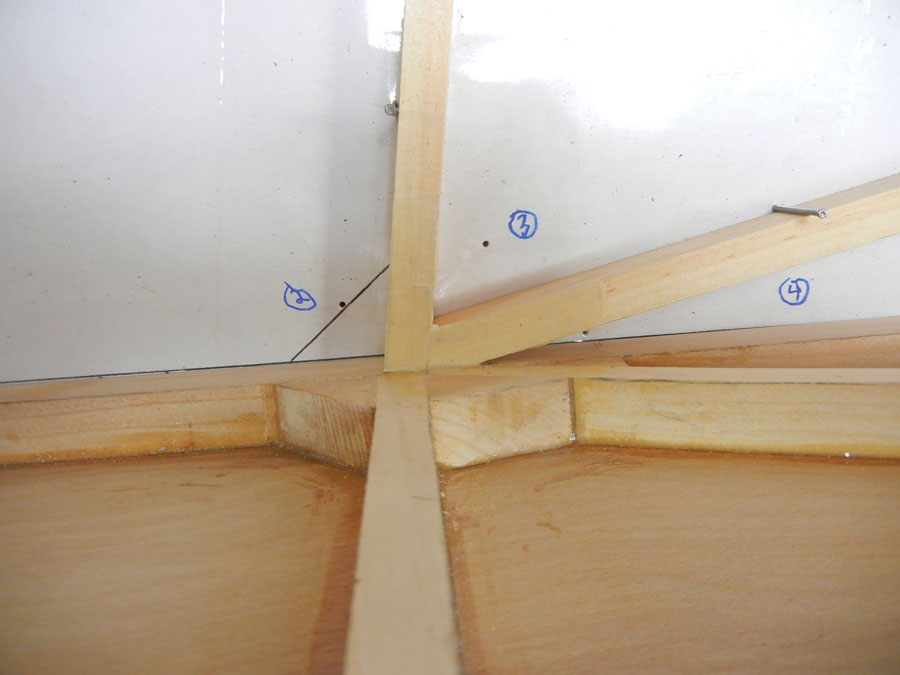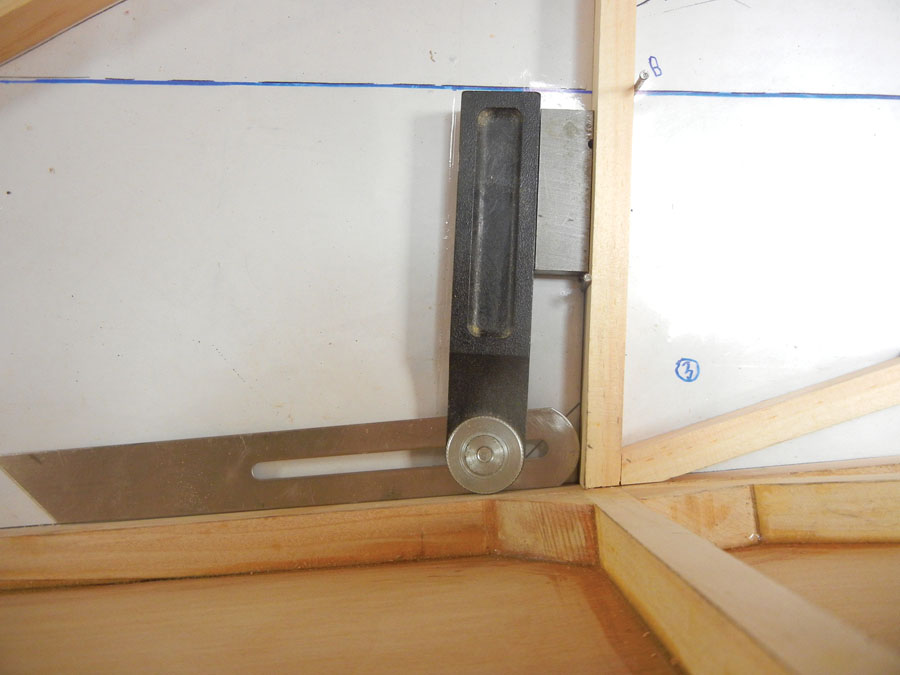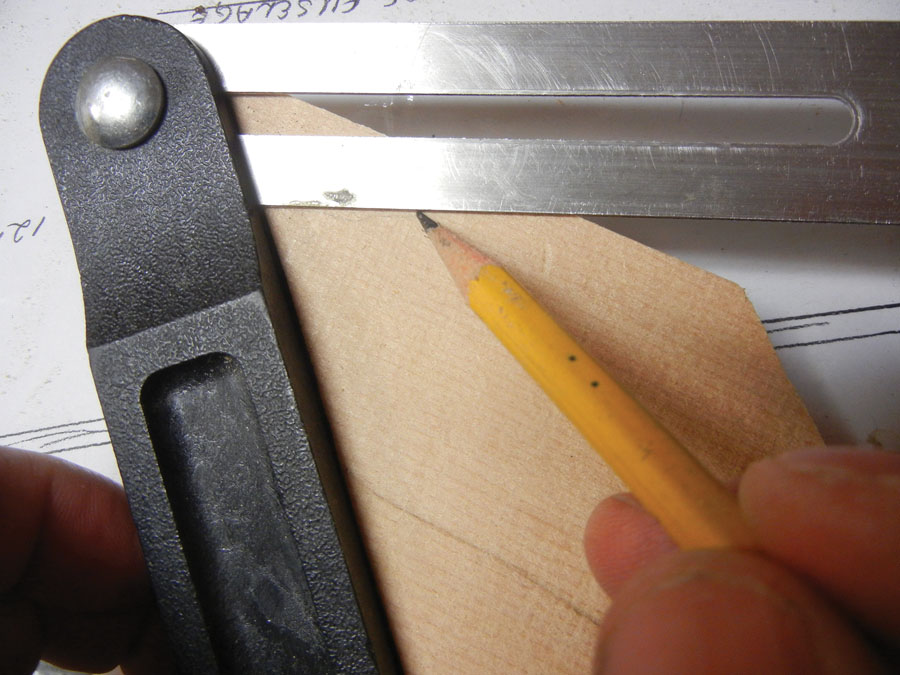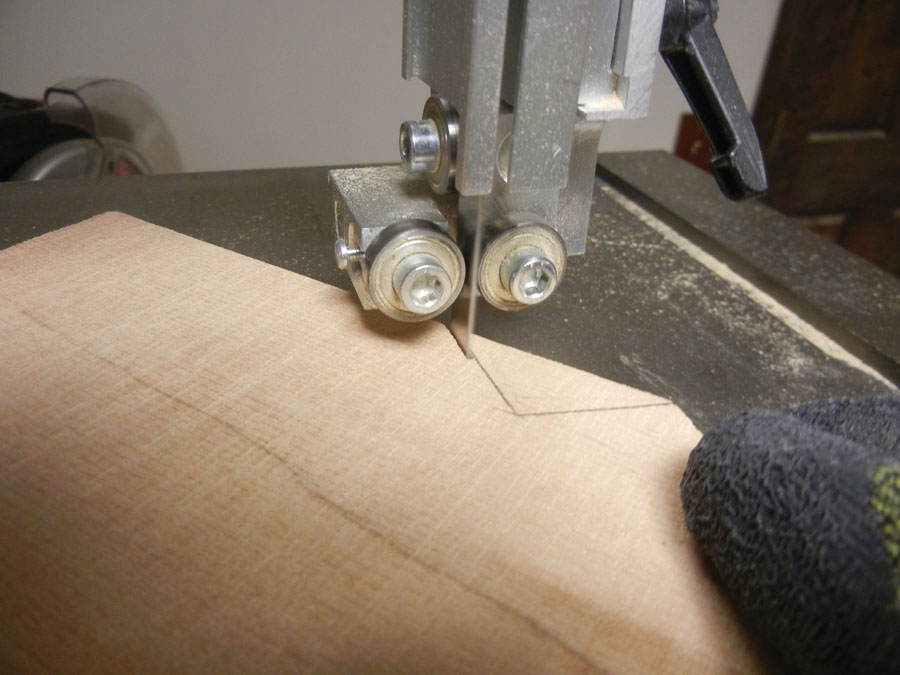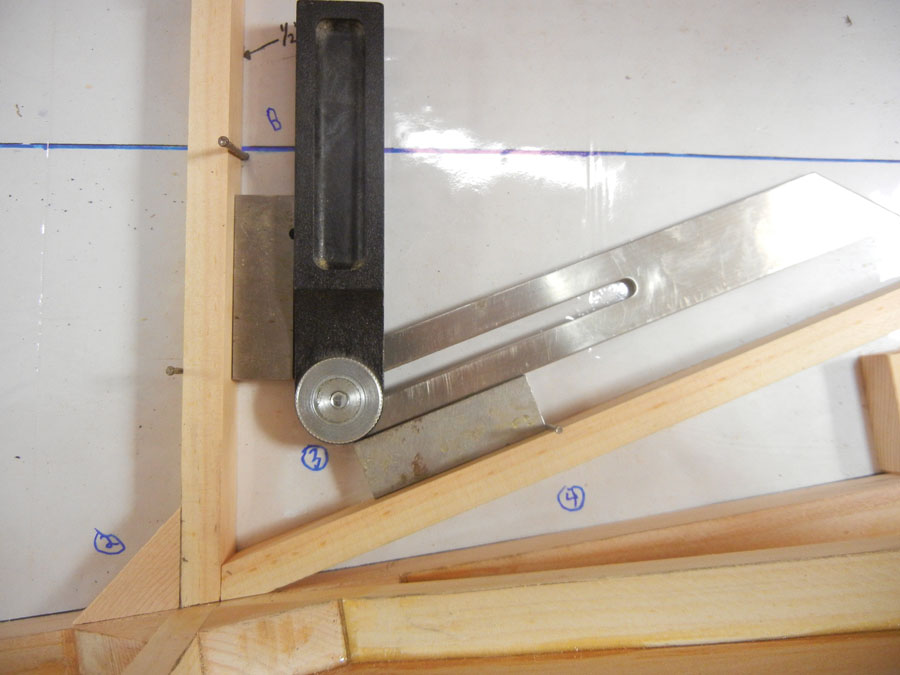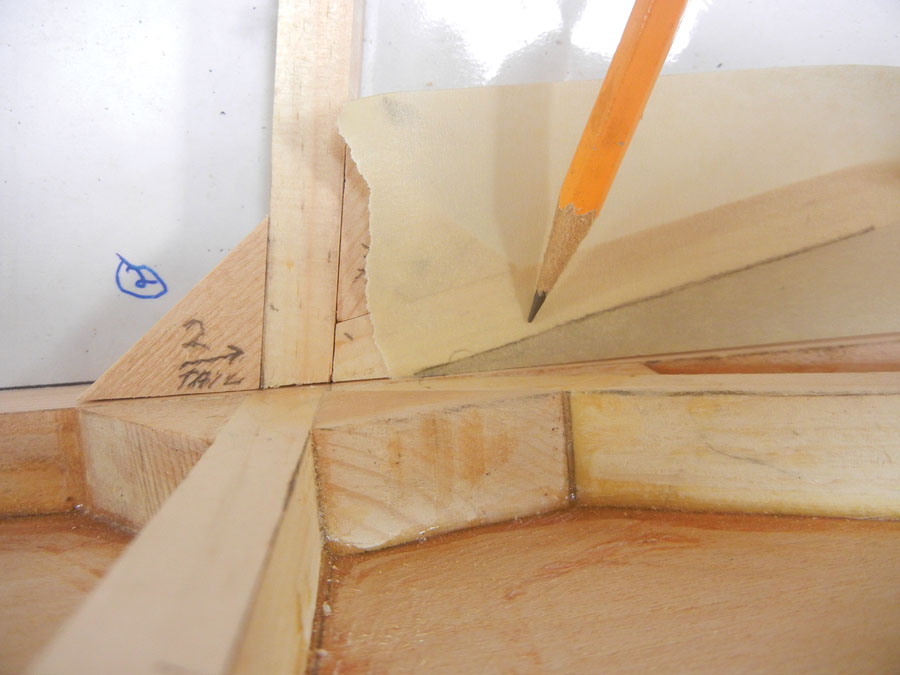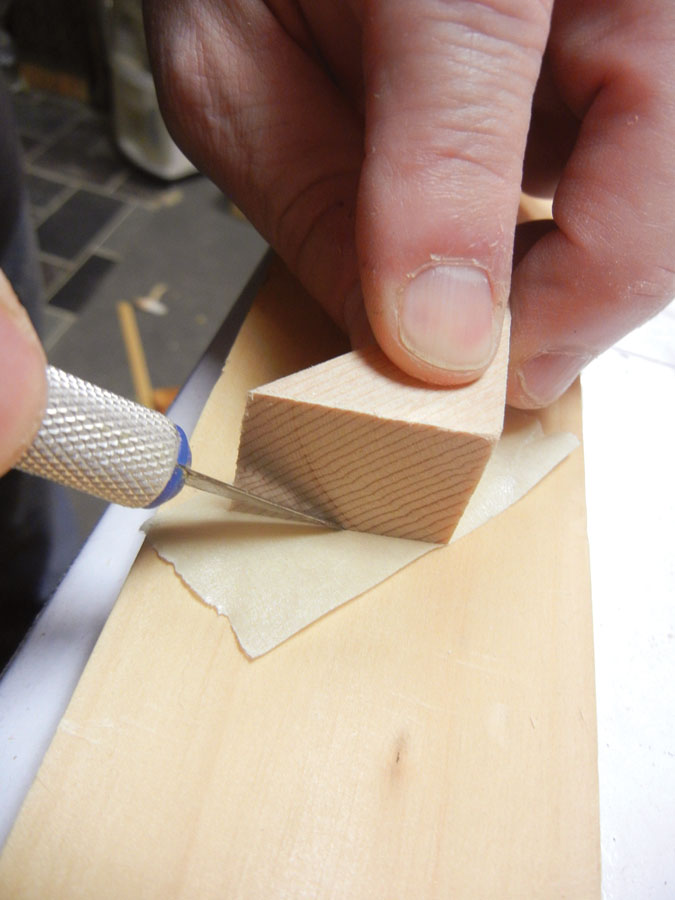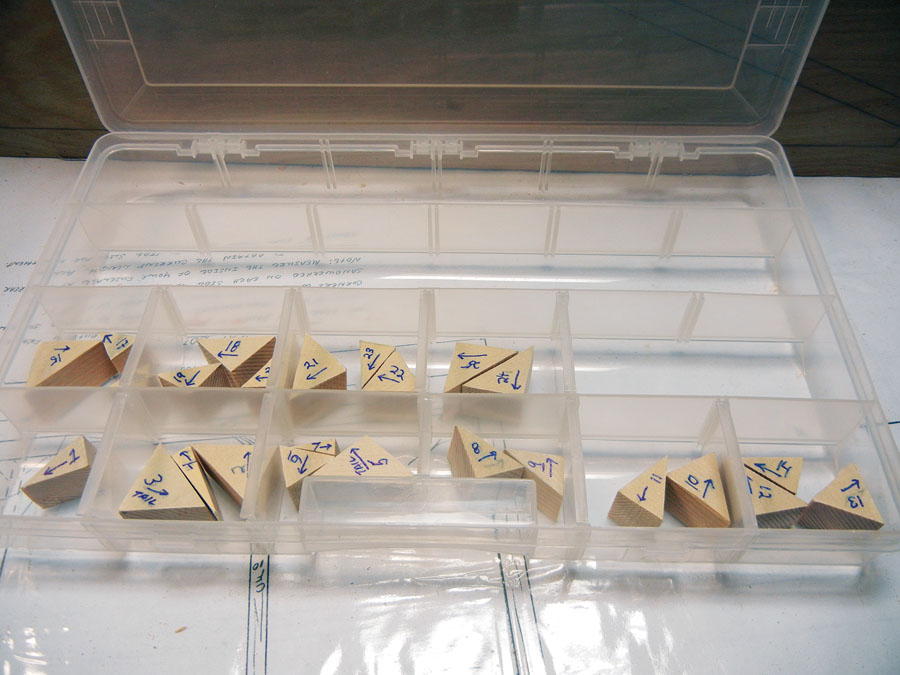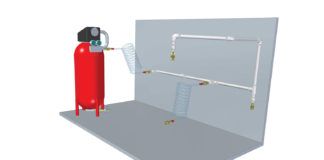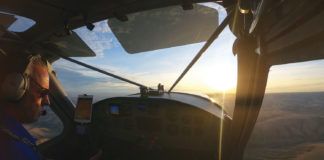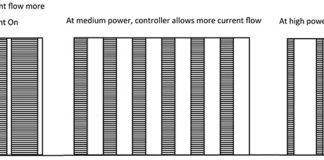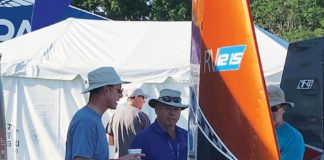Any wood aircraft project comes with a requirement to insert corner blocks for strength between key supporting structures. My Fisher Celebrity project is loaded with these small, but essential, strengthening bits of wood. Nearly all parts of the airframe—wings, fuselage, and tail—are specified to be strengthened with this technique, and many of the joints are additionally surrounded by gussets.
Corner block joinery in aircraft requires a fit more like furniture than something the builder can rationalize as being “just good enough.” This is not the place to depend on the filling qualities of epoxy to make up for lazy fabrication. And that is where the rub is because working to get such precision on such small wood parts that border two sections of structure can be maddening.
The acute angles and odd places where corner blocks need to fit present a woodworking challenge that goes beyond simple measuring, marking, and cutting. I have found that treating this more as an art form than a tedious construction chore is probably the secret to achieving the best quality and at the same time enjoying the experience.
This complex joint supports part of the upper rear Celebrity fuselage. The side is in the foreground.
All of the basic elements of wood construction are involved: wood selection, grain direction, fabricating the piece, dry fitting, and bonding. There is usually little guidance in the plans and in the available literature on proper ways to fabricate and secure these parts. In the Fisher plans, the notation “Typ,” for “Typical” and comments in the instructions tell the builder to block all joints in spite of all blocks not being designated on the prints.
The best construction reference available, and that on which many of the suggestions in this article are based, is probably a Department of Defense publication titled Design of Wood Aircraft Structures, ANC-18, which dates back to the 1940s and is available for free download on the internet. Section 1 of the venerable AC 43.13-1B summarizes much of this document. Also available on EAA’s website is a Tony Bingelis article titled “Aircraft Woodwork Basics” that has very good diagrams and comments.
Wood and Grain Selection
Whenever possible, the type of wood used for the block should be the same as the piece it will be bonded to. When there are times that dissimilar wood parts need blocking, it is best to use the strongest wood with the best grain. When in doubt, go with spruce, which meets aircraft grain straightness criteria.
Grain direction plays an important part in all wood aircraft construction as wood strength along the grain gives a superior bond. This means that forces acting in the same direction as the grain is running are resisted better than when they are encountered by the part at any other angle. Bonds created by two pieces of wood with the grains parallel to each other are stronger than any other combination, especially cases where end grain is bonded to end grain—the weakest joint.
Corner blocks present an end grain challenge because the triangular surrounding structure will not have its members’ respective grains running in parallel but instead running away from each other. To solve this, a triangular corner block’s grain that runs from the apex of the joint straight toward the opposite edge is the best compromise to either side of the adjacent parts.
It would be great if every joint was a right angle, but this is rarely the case. Some places where wood blocks need to go have fairly acute angles and may be in hard to measure places. When the structure being blocked has an angle that is close to or even greater than 90 degrees, the general rule to follow is the same as most wood aircraft construction: When in doubt, align the grain with the longest side of the part.
Part Fabrication: The True Art
Once wood and grain decisions are out of the way, it is time to measure, mark, cut, fit, and bond. The true art begins here.
A T-bevel, or adjustable square, is an inexpensive tool that makes quick work of setting the block angle between two pieces of wood. In most cases your project has ample room for the tool. But there are cases where a nail jig or some part of the structure or simply the acute nature of the angle inhibits its use.
For interference with structure or something as simple as a nail jig, the T-bevel can be offset using any object that will keep it parallel to the parts that make the angle being measured. Two of the photos in this article show how the bases from machinist squares can be used to create perfectly parallel offsets.
In cases where two parts converge at an angle that is highly acute, even more acute than an angle your tool can measure, a simple piece of masking tape can be applied. Set the factory edge of the tape along the edge of the structure that makes one part of the angle, with the remaining tape along the other member. Then take a pencil and highlight the indent made in the tape. Transfer the tape to your wood, and you have a perfect guide for a perfect acute angle cut. Be careful not to stretch the tape, as that will distort the angle.
Once the angles have been transferred to the wood, it is time to cut. AC 43.13-1B in Section 1-6 states that sawn surfaces can be used if they approach the quality of planed surfaces in terms of “uniformity, smoothness, and freedom from crushed fibers.” For these kinds of pieces, I find the band saw to be the best tool. It wastes the least amount of material and cuts with enough precision to make tight wood joints. Use the widest blade your saw will accept. One that is made for resawing, at least inch wide, keeps the blade from drifting and messing up the cut. My personal favorite is the Wood Slicer resaw band saw blade sold at www.HighlandWoodworking.com.
By the way, those rough blobs you see on the right side of the band saw photo are Kevlar work gloves protecting my fingers. And don’t do this without safety glasses either because, while a rare event, small pieces of wood can have unpredictable flight behavior once the band saw separates them from the main wood.
If you have to trim the cut piece while dry fitting it to the structure, then holding the part in a wood vise and good hand technique with a very sharp chisel works best (and does not upset the “no-sanding” purists.)
Bonding the Parts
Now it’s time to get things glued together. Being neat, using the proper amount of epoxy, and avoiding making a mess need not be difficult—but it is time consuming. The photos show the full-sized Fisher prints covered with clear plastic. One truth in gluing is that the silent and often troublesome assistant you have in the shop is gravity. Since epoxy does not adhere to plastic or wax surfaces, some kind of non-stick boundary is needed to keep the project from being permanently bonded to your worktable. The cheapest secret here is a clear plastic table cloth cover that you can purchase in the housewares department of most discount stores. They are inexpensive, clear, thick, smooth, and reject epoxy.
Just like assembling a metal aircraft structure with Clecoes before riveting, dry fitting and making sure that all of the parts work together at once is your best course. Cut and dry fit the entire set of corner blocks and their surrounding members for the largest structure that you can bond at one time.
Along with this goes good marking practice because having lots of similar looking triangular pieces of wood hanging around can get very confusing. When the gloves are on and the epoxy is setting up on the part in your hand is no time to start wondering where the piece goes and in what orientation. The photos show blue circled numbers at each joint location written on the plastic with a Sharpie. In turn, each corner block is labeled with its corresponding joint number, and an arrow points, in this case, toward the tail of the fuselage.
There is masking tape on the top and bottom of each corner block, as well as the surrounding joint cluster parts, because these joints will have gussets attached above and below in the final assembly. Masking keeps the squeezed-out epoxy from bonding to block surfaces where it would need to be removed before gluing the gussets. The 3M tape being used here leaves little to no adhesive residue on the wood. Just in case, after the epoxy sets up, the tape is removed and the parts are lightly sanded with 220-grit sandpaper to remove any adhesive that might remain. This sanding does not crush the grain fibers and does not alter the shape of the parts.
You can use a hobby knife to cut away the excess tape when masking the blocks and surrounding structure. You will find that even after the epoxy has dried on the tape, it will flex enough to be removed. Whatever tape gives you trouble can be coaxed away from the wood carefully with a sharp chisel.
Once you get the process down, you will be surprised at how little effort is needed to tape each part and how little time it really takes—especially compared to the time and effort required to mechanically remove dried epoxy from structure where you don’t want it.
Finally, we are ready to glue. There are two key points about this operation: First, don’t starve the joint with either too little glue or too much pressure. Second, if you have to make a mess, it is best that it happens on the project, not you! With modern epoxies you don’t need the close environmental controls and intense clamping pressures required by the resorcinol or casein glues of the certified aircraft world. Finishing nails work well to place pressure against each corner block when placed on the outside of each joint. The pressure exerted is more than sufficient to satisfy the bonding needs by a commonly used epoxy like T-88.
As in all other construction methods, care and patience is foremost in wood aircraft construction. This medium offers the opportunity to combine good practice with a bit of creativity. If you are in the quickbuild mindset then you can see by the fabrication detail in this article that building in wood is probably not for you. But if it is, then the rewards that yield from the little things, like secure corner blocked joints, can in themselves be quite satisfying.

